Two Examples of a UnderWater food chain.
Algae ---> Sea Urchin ---> Sea Otter ---> Bacteria
Plankton ---> Shrimp ---> Harp Seal ---> fungi
Plankton ---> Shrimp ---> Harp Seal ---> fungi
The very beginning Energy Source
Right before the producer, comes something else. Yet, it provides energy for the producer. The one thing that gives to producers also known as the sun! You may not have known, but the sun is very inportant when it comes to food webs. If there were no sun, there would probably be no producer and it would DEFINATELY ruin the food chain. But, right after the energy source, the sun, are the producers who starts it all. It provides one of the most important things in order for the producer to stay independent and stay on its own.
Right before the producer, comes something else. Yet, it provides energy for the producer. The one thing that gives to producers also known as the sun! You may not have known, but the sun is very inportant when it comes to food webs. If there were no sun, there would probably be no producer and it would DEFINATELY ruin the food chain. But, right after the energy source, the sun, are the producers who starts it all. It provides one of the most important things in order for the producer to stay independent and stay on its own.
Producer Start It All
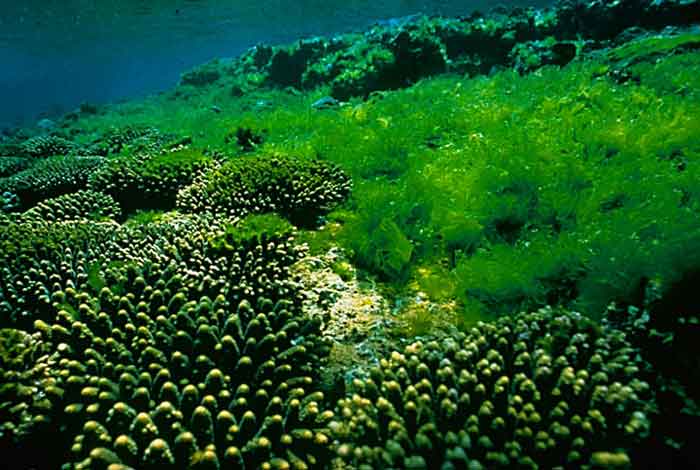 Producers are very independent, and a very important part of the food chain. As part of a food chain or food web, the producer takes the sun's energy to create their own food and produce on its own. The food they create is sugar, created from the process called photosynthesis. They collect the sun's energy, carbon dioxide, and water to create the sugar for food.
Producers are very independent, and a very important part of the food chain. As part of a food chain or food web, the producer takes the sun's energy to create their own food and produce on its own. The food they create is sugar, created from the process called photosynthesis. They collect the sun's energy, carbon dioxide, and water to create the sugar for food.
 Producers are very independent, and a very important part of the food chain. As part of a food chain or food web, the producer takes the sun's energy to create their own food and produce on its own. The food they create is sugar, created from the process called photosynthesis. They collect the sun's energy, carbon dioxide, and water to create the sugar for food.
Producers are very independent, and a very important part of the food chain. As part of a food chain or food web, the producer takes the sun's energy to create their own food and produce on its own. The food they create is sugar, created from the process called photosynthesis. They collect the sun's energy, carbon dioxide, and water to create the sugar for food. An example of the producer is the algae in the oceans. The algae has two different types of chlorophyll that captures the sun's energy to produce its own food! Some algae grow on its own inside the water plants in the ocean. But algae mostly grows in damp places in the water such as aquatic enviroment. Many different types of algae grow in the water, yet filamentous algae are the plant nutrient.
There is a lot of things in the world, and these things all start from one specific thing, called the producer. Take the plankton for an example. The sun first gives off its natural energy to the people. With water and oxygen, slowly the plant grows green and healthy, causing it to grow tasty and fresh fruits which are later eaten by other small animals. As you can see, the producer is the main source to the whole world, and the objects that live in this world continue the cycle on and on. This cycle goes on and on, nonstop, and the world will always kill itself and recreate. Think of it like the human cycle. Every day, humans will die, but everyday humans will be born. All in all, producers are the main sources to the world, and they are the one that makes our life so full of life, energy, and excitement.
There is a lot of things in the world, and these things all start from one specific thing, called the producer. Take the plankton for an example. The sun first gives off its natural energy to the people. With water and oxygen, slowly the plant grows green and healthy, causing it to grow tasty and fresh fruits which are later eaten by other small animals. As you can see, the producer is the main source to the whole world, and the objects that live in this world continue the cycle on and on. This cycle goes on and on, nonstop, and the world will always kill itself and recreate. Think of it like the human cycle. Every day, humans will die, but everyday humans will be born. All in all, producers are the main sources to the world, and they are the one that makes our life so full of life, energy, and excitement.
Primary, primary, it Eats first
 Don't you just love when you're the first one at the dinner table and you get the foods you want? Well that's how primary consumers are like. They are the first to dig in. A primary producers must eat the plants or producers for it to eat food. Since they eat, or consume, other things, they are called "producers." Most hebivores are primary consumers because they only eat plants (producers).
Don't you just love when you're the first one at the dinner table and you get the foods you want? Well that's how primary consumers are like. They are the first to dig in. A primary producers must eat the plants or producers for it to eat food. Since they eat, or consume, other things, they are called "producers." Most hebivores are primary consumers because they only eat plants (producers).An example of a primary consumer is the sea urchin. Sea urchins live in the mid to low level of the tide to find the food. They feed directly to algae and other producers such as, seaweed. Sea urchins mostly live in the sea located in rock pools, kelp forests, and coral reefs. Different types of sea urchins include, the Caribbian sea urchin, pencil urchin, slate pencil urchin, purple sea urchin, and the sea potato urchin. (Aren't those funny names?)
Another example of a primary consumer is the shrimp. The shrimp feed directly on the plankton swimming through the water. They belong in a group called "crustaceans." Since most shrimp are constantly being fished out of the ocean, in ruins the food chain (and/or the food web) because it may not provide enough food for the secondary consumers that feed on it.
Another example of a primary consumer is the shrimp. The shrimp feed directly on the plankton swimming through the water. They belong in a group called "crustaceans." Since most shrimp are constantly being fished out of the ocean, in ruins the food chain (and/or the food web) because it may not provide enough food for the secondary consumers that feed on it.
Secondary Consumers
First the worst, second the best! Don't feel so depressed, after we all know that second is better than first. The secondary consumer is the second one to eat its meal. it carries on the primary consumers duties, and later on gets decomposed by the decomposer.
An example of a secondary consumer is the harp seal. First the shrimp sacrifices itself and gives its life to the seal. The seal then carries on its duties and later when its dead it gets decomposed by decomposers, for example bacteria. Just like the primary consumer, the secondary consumer is very important to the food chain and without it, the world would not go in a correct order, and many animals would die of starvation, because the food that they eat is not there. Do not pity the animals that sacrificed themselves, because they are the ones that create the world's food of choice, and they are the ones who make the world so full of "life" and "nature".
 Another example of a secondary consumer would be the sea otter. One of the foods that a sea otter would eat is the sea urchin, a primary consumer. The sea otter uses a hard tool, such as a rock, and breaks open the hard shell of the urchin. Of course, a sea otter would need to eat in order to live, that's why they are called, secondary consumers. A secondary consumer would eat a primary consumer which makes a food chain (or web) go on and on in a circle.
Another example of a secondary consumer would be the sea otter. One of the foods that a sea otter would eat is the sea urchin, a primary consumer. The sea otter uses a hard tool, such as a rock, and breaks open the hard shell of the urchin. Of course, a sea otter would need to eat in order to live, that's why they are called, secondary consumers. A secondary consumer would eat a primary consumer which makes a food chain (or web) go on and on in a circle.
An example of a secondary consumer is the harp seal. First the shrimp sacrifices itself and gives its life to the seal. The seal then carries on its duties and later when its dead it gets decomposed by decomposers, for example bacteria. Just like the primary consumer, the secondary consumer is very important to the food chain and without it, the world would not go in a correct order, and many animals would die of starvation, because the food that they eat is not there. Do not pity the animals that sacrificed themselves, because they are the ones that create the world's food of choice, and they are the ones who make the world so full of "life" and "nature".
 Another example of a secondary consumer would be the sea otter. One of the foods that a sea otter would eat is the sea urchin, a primary consumer. The sea otter uses a hard tool, such as a rock, and breaks open the hard shell of the urchin. Of course, a sea otter would need to eat in order to live, that's why they are called, secondary consumers. A secondary consumer would eat a primary consumer which makes a food chain (or web) go on and on in a circle.
Another example of a secondary consumer would be the sea otter. One of the foods that a sea otter would eat is the sea urchin, a primary consumer. The sea otter uses a hard tool, such as a rock, and breaks open the hard shell of the urchin. Of course, a sea otter would need to eat in order to live, that's why they are called, secondary consumers. A secondary consumer would eat a primary consumer which makes a food chain (or web) go on and on in a circle.Decomposers: Bacteria Breaks Down!
It's clean up time! What do we do when the dead carcasses of the animals lie in the ocean. Someone has to clean it up, but who? This is when the decomposers come to use. The decompose the animals and make them into something better.
Take bacteria for an example. Even though when it looks like it is just staying there on the ocean floor, actually bacteria is releasing carbon and giving it to the plants. This makes the plants grow better because we all know plants need sunlight, water, and carbon dioxide. Decomposers are at the end of the cycle, but do not look at them very lightly. Without them, the world would be full of dead animal bodies, which is why these small creatures are so important. Remember, not only can these magicians make these bad things disappear, but they can also tranform them into good things that help our environment become a better place! 
Whenever a secondary or even a primary consumer dies, it eventually becomes part of the soil. That's because the body of the primary or secondary consumer lays restlessly on the soil which takes time to break down. The decomposers, such as worms, fungi, and bacteria, breaks down the dead animals (and even plants) into fresh new nutrients! These nutrients that broke down from decomposers, are for the producers that need to! One important of a decomposer is the marine worms in the ocean! Worms in the ocean ARE very unusual, but they still contain an important part in a food chain. They break down secondary and even a primary consumer's body to make nutrients!

Whenever a secondary or even a primary consumer dies, it eventually becomes part of the soil. That's because the body of the primary or secondary consumer lays restlessly on the soil which takes time to break down. The decomposers, such as worms, fungi, and bacteria, breaks down the dead animals (and even plants) into fresh new nutrients! These nutrients that broke down from decomposers, are for the producers that need to! One important of a decomposer is the marine worms in the ocean! Worms in the ocean ARE very unusual, but they still contain an important part in a food chain. They break down secondary and even a primary consumer's body to make nutrients!
Leftovers are for scavengers
A scavenger, maybe the least common of them all? Of course, they're like vaccum cleaners! They consume the leftover and carcass of a dead animal! When a dead animal, lies down on the ocean floor, it must be cleaned up after! There are no vaccumbs in the ocean, so that is why we have a scavenger, who feeds on the animal's dead body.

One example of a scavenger, and a popular one too, would be the hermit crab. Hermit crabs mostly eat anything they find. It not neccesarily is only a scavenger, but it can also be a primary and secondary consumer, since it eats almost anything. It sweeps the ocean sand clean, leaving a spotless place with, possibly leftover bones!
Another example for a scavenger is the shark! Just like a hermit crab, the shark eats different things. Such as, seals, planktons, and other sharks! It still feeds on dead bodies in the oceans, which you can still call a scavenger. Again, the shark can be called a primary consumer AND a secondary consumer.
Scavengers are sure a big part in the food chain (and/or food web)
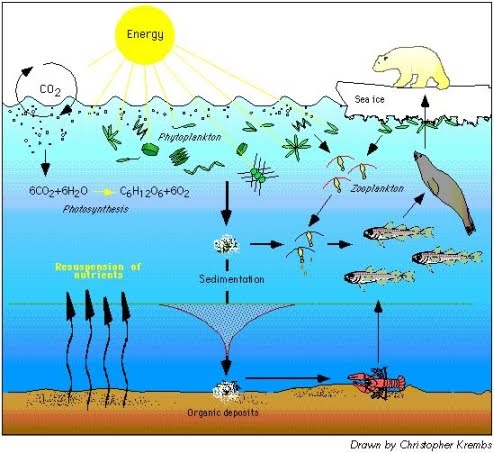
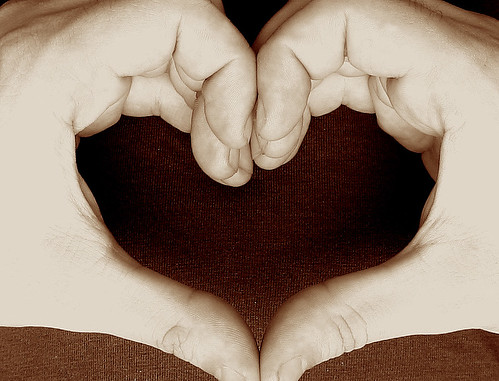
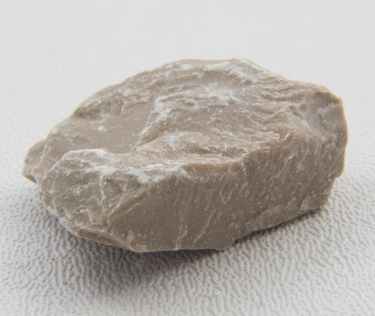
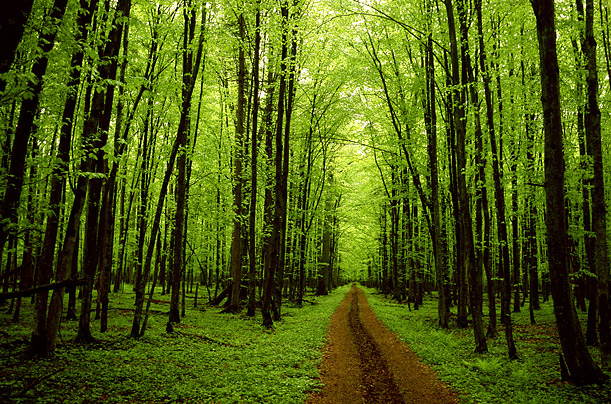








OOOO!!!! it's an undersea biome..
ReplyDeleteuhhh thank you
ReplyDelete